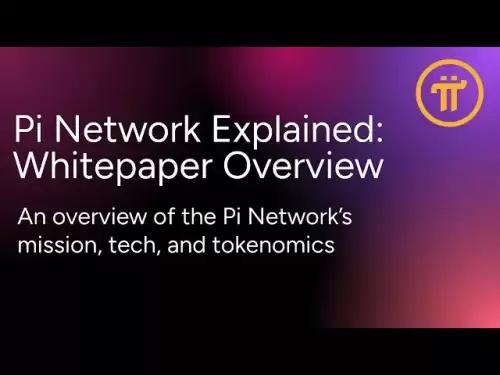-
 Bitcoin
Bitcoin $121,713.8152
3.06% -
 Ethereum
Ethereum $3,041.6437
2.42% -
 XRP
XRP $2.9499
5.12% -
 Tether USDt
Tether USDt $1.0000
-0.02% -
 BNB
BNB $704.1034
1.75% -
 Solana
Solana $166.7523
2.91% -
 USDC
USDC $0.9999
0.00% -
 Dogecoin
Dogecoin $0.2052
2.90% -
 TRON
TRON $0.3011
-0.47% -
 Cardano
Cardano $0.7461
1.42% -
 Hyperliquid
Hyperliquid $48.3650
1.12% -
 Stellar
Stellar $0.4548
3.52% -
 Sui
Sui $3.9527
14.50% -
 Chainlink
Chainlink $16.3300
5.87% -
 Bitcoin Cash
Bitcoin Cash $511.8016
1.25% -
 Hedera
Hedera $0.2395
1.40% -
 Avalanche
Avalanche $21.6526
2.06% -
 UNUS SED LEO
UNUS SED LEO $9.0073
-0.23% -
 Shiba Inu
Shiba Inu $0.0...01369
2.61% -
 Toncoin
Toncoin $3.0335
0.66% -
 Litecoin
Litecoin $96.6206
1.72% -
 Monero
Monero $355.1673
5.35% -
 Polkadot
Polkadot $4.0839
2.47% -
 Uniswap
Uniswap $9.3282
9.72% -
 Dai
Dai $0.9997
-0.01% -
 Ethena USDe
Ethena USDe $1.0004
-0.04% -
 Pepe
Pepe $0.0...01248
1.07% -
 Bitget Token
Bitget Token $4.4642
2.68% -
 Aave
Aave $325.0626
6.81% -
 Bittensor
Bittensor $418.1482
6.22%
What is a reentrancy attack in a smart contract?
A reentrancy attack exploits recursive function calls in smart contracts to drain funds, as seen in the infamous DAO hack.
Jul 15, 2025 at 02:50 am
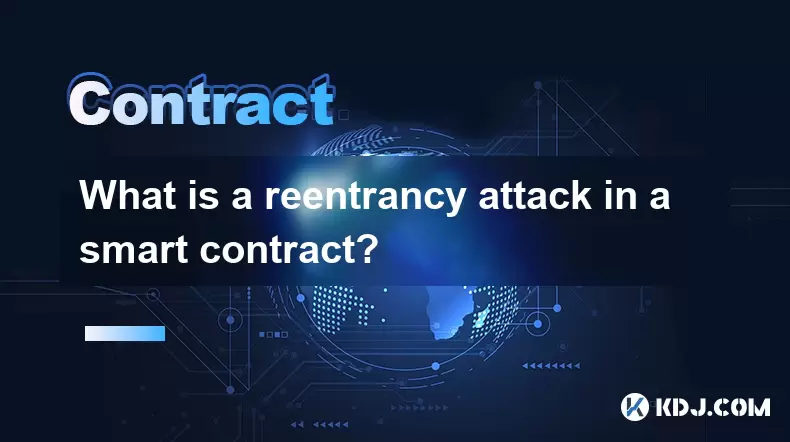
Understanding the Basics of Smart Contracts
A smart contract is a self-executing contract with the terms directly written into code. It runs on blockchain platforms like Ethereum and automatically enforces agreements between parties without intermediaries. These contracts are immutable once deployed, meaning any vulnerabilities present in the code cannot be altered post-deployment. This immutability makes it crucial to ensure that smart contracts are secure from all possible exploits before they go live.
One such exploit is the reentrancy attack, which has been responsible for significant losses in the cryptocurrency ecosystem. Understanding how this vulnerability works requires a grasp of how smart contracts interact with external accounts and other contracts through function calls.
What Is a Reentrancy Attack?
A reentrancy attack occurs when a malicious contract repeatedly calls a vulnerable function in another contract before the initial execution completes. This recursive behavior can drain funds or manipulate state variables in unintended ways.
The classic example involves a contract handling Ether transfers. If a function sends Ether to an external address before updating its internal balance, a malicious contract can reenter the function during the transfer and drain the contract’s funds repeatedly. The infamous DAO hack in 2016, which led to a $60 million Ether loss, was a result of a reentrancy vulnerability.
How Does a Reentrancy Attack Work in Practice?
To better understand the mechanics of a reentrancy attack, consider the following simplified scenario:
- A contract has a
withdraw()function that allows users to withdraw their deposited Ether. - The function first sends Ether to the user using
call.value(), then updates the user's balance to zero. - A malicious contract registers itself as a user and deposits Ether into the target contract.
- When it calls
withdraw(), the target contract initiates the Ether transfer. - During the transfer, the malicious contract’s fallback function (which gets triggered automatically) calls
withdraw()again. - Since the balance hasn’t been updated yet, the contract believes the user still has funds available and sends more Ether.
- This loop continues until the contract is drained or the gas runs out.
This process exploits the order of operations within the contract—specifically, sending Ether before updating the state.
Types of Reentrancy Vulnerabilities
Reentrancy attacks come in several forms, each exploiting different aspects of contract logic:
- Single-function reentrancy: This occurs when a single function contains both external calls and state changes. An attacker triggers reentry during the external call before the state is updated.
- Cross-function reentrancy: Here, multiple functions share state variables. An attacker can reenter a second function while the first is still executing, manipulating shared data inconsistently.
- Delegatecall reentrancy: This advanced variant uses the
delegatecallmechanism to execute code from one contract in the context of another. If not handled carefully, this can lead to unexpected reentrancy scenarios.
Each type requires careful auditing and specific mitigation strategies to prevent exploitation.
How to Prevent Reentrancy Attacks
Preventing reentrancy attacks involves adopting best practices in contract design and leveraging security tools:
- Use checks-effects-interactions pattern: Always update the contract’s state before making any external calls. This ensures that no reentry can manipulate pre-existing balances or states.
- Implement reentrancy guards: Libraries like OpenZeppelin provide reentrancy guard modifiers that use a mutex variable to block reentrant calls.
- Avoid complex external calls: Minimize interactions with unknown or untrusted contracts. Where necessary, ensure callbacks are safe and do not trigger arbitrary code.
- Use pull over push payments: Instead of pushing funds to users, let them initiate withdrawals. This reduces the risk of recursive draining.
- Conduct thorough audits: Use automated tools and manual reviews to detect potential reentrancy vectors in your codebase.
By applying these strategies, developers can significantly reduce the likelihood of a successful reentrancy attack.
Real-World Examples of Reentrancy Exploits
Several high-profile incidents highlight the devastating impact of reentrancy attacks:
- The DAO Hack (2016): The most famous case involved a decentralized autonomous organization whose smart contract allowed recursive withdrawals. Attackers exploited this to drain millions worth of Ether.
- Fusion Network Attack (2021): Hackers exploited a cross-function reentrancy bug in the protocol, leading to a $14 million loss.
- Warp Finance Hack (2021): Multiple reentrancy points were exploited across different functions, allowing attackers to drain nearly $8 million in assets.
These examples underscore the importance of rigorous testing and adherence to secure coding practices.
Frequently Asked Questions
Q: Can reentrancy attacks occur in non-Ethereum blockchains?
Yes, reentrancy attacks can affect any blockchain platform that supports smart contracts with external calls and mutable state. While Ethereum has seen the most prominent cases, similar vulnerabilities exist on Binance Smart Chain, Solana, and others.
Q: Are all external calls dangerous?
No, but external calls should be treated with caution. The danger arises when they are made before updating critical state variables. Proper coding patterns and safeguards can mitigate this risk.
Q: How do I test my contract for reentrancy vulnerabilities?
You can use static analysis tools like Slither or Securify, perform manual code audits, and simulate attack scenarios using frameworks like Brownie or Hardhat. Using reentrancy guards and following secure development practices also helps.
Q: What is the difference between a flash loan attack and a reentrancy attack?
While both can exploit DeFi protocols, a flash loan attack relies on borrowing large amounts of capital without collateral and repaying it within the same transaction. A reentrancy attack focuses on recursively calling functions to manipulate contract state. However, some attacks combine both techniques for greater impact.
Disclaimer:info@kdj.com
The information provided is not trading advice. kdj.com does not assume any responsibility for any investments made based on the information provided in this article. Cryptocurrencies are highly volatile and it is highly recommended that you invest with caution after thorough research!
If you believe that the content used on this website infringes your copyright, please contact us immediately (info@kdj.com) and we will delete it promptly.
- Ruvi AI: The Audited Token Set to Outshine Ethereum with Massive Gains?
- 2025-07-15 06:50:12
- DeFi Token with 10X Potential: Mutuum Finance and the Year-End Opportunity
- 2025-07-15 06:50:12
- Ethereum, 2025 Prediction & Ozak AI: Are New?
- 2025-07-15 06:30:12
- Bitcoin Blasts Past $122K: CZ Binance's ATH Future Vision
- 2025-07-15 06:30:12
- Metaplanet's Crypto Playbook: Asia Treasuries and the Bitcoin Standard
- 2025-07-15 06:35:12
- Token Buybacks & Altcoin Developers: Navigating Market Tokens in the Wild West
- 2025-07-15 04:30:12
Related knowledge

Psychology of trading Bitcoin contracts
Jul 13,2025 at 02:50am
Understanding the Emotional Rollercoaster of Bitcoin Futures TradingBitcoin contract trading, especially in the form of futures, introduces a high lev...
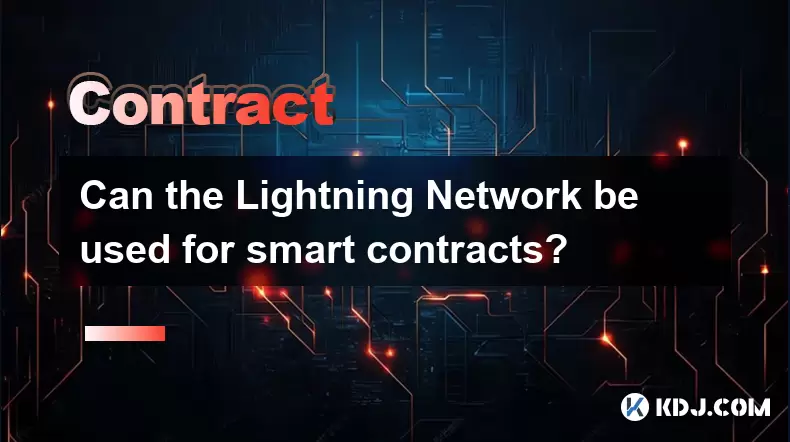
Can the Lightning Network be used for smart contracts?
Jul 14,2025 at 11:28pm
Understanding the Lightning Network's Core FunctionalityThe Lightning Network is a second-layer solution built on top of blockchain protocols like Bit...

Best time of day to trade Bitcoin contracts?
Jul 13,2025 at 05:29am
Understanding Bitcoin Contracts and Their VolatilityBitcoin contracts, particularly futures contracts, are derivative instruments that allow traders t...
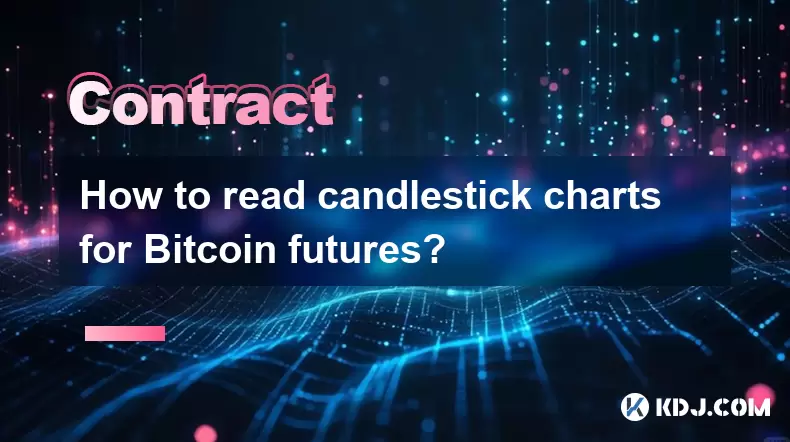
How to read candlestick charts for Bitcoin futures?
Jul 15,2025 at 03:00am
Understanding the Basics of Candlestick ChartsCandlestick charts are widely used in cryptocurrency trading, especially for Bitcoin futures. Each candl...

How to use Fibonacci levels in Bitcoin contract trading?
Jul 13,2025 at 08:07am
Understanding Fibonacci Levels in TradingFibonacci levels are a technical analysis tool used by traders to identify potential support and resistance z...
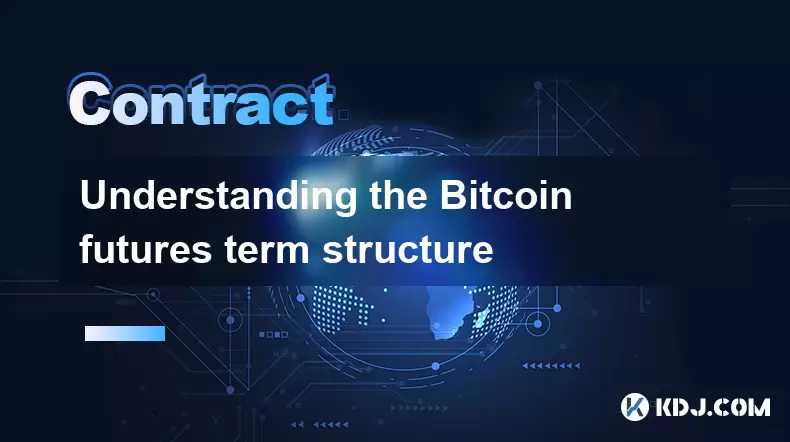
Understanding the Bitcoin futures term structure
Jul 13,2025 at 08:28am
What is Bitcoin Futures Term Structure?The Bitcoin futures term structure refers to the relationship between the prices of Bitcoin futures contracts w...

Psychology of trading Bitcoin contracts
Jul 13,2025 at 02:50am
Understanding the Emotional Rollercoaster of Bitcoin Futures TradingBitcoin contract trading, especially in the form of futures, introduces a high lev...

Can the Lightning Network be used for smart contracts?
Jul 14,2025 at 11:28pm
Understanding the Lightning Network's Core FunctionalityThe Lightning Network is a second-layer solution built on top of blockchain protocols like Bit...

Best time of day to trade Bitcoin contracts?
Jul 13,2025 at 05:29am
Understanding Bitcoin Contracts and Their VolatilityBitcoin contracts, particularly futures contracts, are derivative instruments that allow traders t...

How to read candlestick charts for Bitcoin futures?
Jul 15,2025 at 03:00am
Understanding the Basics of Candlestick ChartsCandlestick charts are widely used in cryptocurrency trading, especially for Bitcoin futures. Each candl...

How to use Fibonacci levels in Bitcoin contract trading?
Jul 13,2025 at 08:07am
Understanding Fibonacci Levels in TradingFibonacci levels are a technical analysis tool used by traders to identify potential support and resistance z...

Understanding the Bitcoin futures term structure
Jul 13,2025 at 08:28am
What is Bitcoin Futures Term Structure?The Bitcoin futures term structure refers to the relationship between the prices of Bitcoin futures contracts w...
See all articles


























